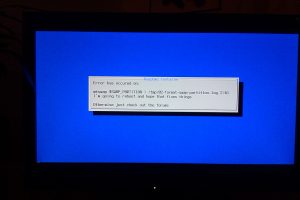Steps
- From your root userid, enter the command “swapon -s”. This will show your allocated swap disk or disks, if any.
- Enter the command “free”. This will show both your memory and your swap usage.
- In either of the above, look for the used space, compared to the total size.
Where is swap space in Linux?
Swap is a space on a disk that is used when the amount of physical RAM memory is full. When a Linux system runs out of RAM, inactive pages are moved from the RAM to the swap space. Swap space can take the form of either a dedicated swap partition or a swap file.
How do I view swap files in Linux?
HowTo: Check Swap Usage and Utilization in Linux
- Option #1: /proc/swaps file. Type the following command to see total and used swap size:
- Option #2: swapon command. Type the following command to show swap usage summary by device.
- Option #3: free command. Use the free command as follows:
- Option #4: vmstat command.
- Option #5: top/atop/htop command.
How do I manage swap space in Linux?
While it is used to augment system RAM, usage of swap spaces should be kept to a minimum whenever possible.
- Create a swap space. To create a swap space, an administrator need to do three things:
- Assign the partition type.
- Format the device.
- Activate a swap space.
- Persistently activate swap space.
How do I clear swap memory in Linux?
How to Clear RAM Memory Cache, Buffer and Swap Space on Linux
- Clear PageCache only. # sync; echo 1 > /proc/sys/vm/drop_caches.
- Clear dentries and inodes. # sync; echo 2 > /proc/sys/vm/drop_caches.
- Clear PageCache, dentries and inodes. # sync; echo 3 > /proc/sys/vm/drop_caches.
- sync will flush the file system buffer. Command Separated by “;” run sequentially.
How much swap space do I need Linux?
For more modern systems (>1GB), your swap space should be at a minimum be equal to your physical memory (RAM) size “if you use hibernation”, otherwise you need a minimum of round(sqrt(RAM)) and a maximum of twice the amount of RAM.
How Big Should Swap be Linux?
5 Answers. You should be fine with just 2 or 4 Gb of swap size, or none at all (since you don’t plan hibernating). An often-quoted rule of thumb says that the swap partition should be twice the size of the RAM.
How do I change the swap space in Linux?
The basic steps to take are simple:
- Turn off the existing swap space.
- Create a new swap partition of the desired size.
- Reread the partition table.
- Configure the partition as swap space.
- Add the new partition/etc/fstab.
- Turn on swap.
What is Swappiness Linux?
Swappiness is the kernel parameter that defines how much (and how often) your Linux kernel will copy RAM contents to swap. This parameter’s default value is “60” and it can take anything from “0” to “100”. The higher the value of the swappiness parameter, the more aggressively your kernel will swap.
How do I switch off in Linux?
- run swapoff -a : this will immediately disable swap.
- remove any swap entry from /etc/fstab.
- reboot the system. If the swap is gone, good. If, for some reason, it is still here, you had to remove the swap partition. Repeat steps 1 and 2 and, after that, use fdisk or parted to remove the (now unused) swap partition.
- reboot.
How do I delete swap files in Linux?
To remove a swap file:
- At a shell prompt as root, execute the following command to disable the swap file (where /swapfile is the swap file): swapoff -v /swapfile.
- Remove its entry from the /etc/fstab file.
- Remove the actual file: rm /swapfile.
How do I increase swap space in RHEL 6?
How to increase swap space on Linux
- Step 1 : Create the PV. First, create a new Physical Volume using the disk /dev/vxdd.
- Step 2 : Add PV to existing VG.
- Step 3 : Extend LV.
- Step 4 : Format swap space.
- Step 5 : Add swap in /etc/fstab (optional if already added)
- Step 6 : Activate VG and LV.
- Step 7 : Activate the swap space.
Can I delete Linux swap partition?
It should be safe to simply remove the swap partition. While I personally never bothered removing it from /etc/fstab , it most certainly won’t hurt either. If it has a swap partition, it can move some data from RAM to swap to prevent the system from freezing.
How do I free up space on Linux?
Freeing disk space on your Linux server
- Get to the root of your machine by running cd /
- Run sudo du -h –max-depth=1.
- Note which directories are using a lot of disk space.
- cd into one of the big directories.
- Run ls -l to see which files are using a lot of space. Delete any you don’t need.
- Repeat steps 2 to 5.
What happens when swap memory is full?
When the system needs more memory and the RAM is full, inactive pages in the memory will be moved to the swap space. Swap is not a replacement to physical memory, it is just a small portion on hard drive; it must be created during the installation.
What is swap in free command?
About free. Displays the total amount of free and used physical and swap memory in the system, as well as the buffers used by the kernel.
Should Swap be primary or logical?
2 Answers. For root and swap you can choose logical or primary your choice but remember you can only have 4 primary partitions on the hard disk after that no more partitions(logical or primary) will be created(i mean you cannot create partitions after that).
Does Linux need swap?
If you have a RAM of 3GB or higher, Ubuntu will automatically NOT USE the Swap space since it’s more than enough for the OS. Now do you really need a swap partition? You actually don’t have to have swap partition, but it is recommended in case you do use up that much memory in normal operation.
How Big Should Linux swap partition be?
That should usually be more than enough swap space, too. If you have a large amount of RAM — 16 GB or so — and you don’t need hibernate but do need disk space, you could probably get away with a small 2 GB swap partition. Again, it really depends on how much memory your computer will actually use.
How much memory does Linux swap use?
The “Swap = RAM x2” rule is for old computers with 256 or 128mb of ram. So 1 GB of swap is usually enough for 4GB of RAM. 8 GB would be too much. If you use hibernate, it’s safe to have as much swap as your amount of RAM.
Does Ubuntu 18.04 Need swap?
Ubuntu 18.04 LTS don’t need an additional Swap partition. Because it uses a Swapfile instead. A Swapfile is a large file which works just like a Swap partition. Otherwise the bootloader may be installed in the wrong hard drive and as a result, you may not be able to boot into your new Ubuntu 18.04 operating system.
How much space does Linux need?
A typical Linux installation will need somewhere between 4GB and 8GB of disk space, and you need at least a bit of space for user files, so I generally make my root partitions at least 12GB-16GB.
What does swap out mean?
swap-out. Verb. (third-person singular simple present swaps out, present participle swapping out, simple past and past participle swapped out) (computing) To transfer (memory contents) into a swap file.
How do I remove swap partition?
To remove a swap file:
- At a shell prompt as root, execute the following command to disable the swap file (where /swapfile is the swap file): # swapoff -v /swapfile.
- Remove its entry from the /etc/fstab file.
- Remove the actual file: # rm /swapfile.
What is swap priority?
Swap pages are allocated from areas in priority order, highest. priority first. For areas with different priorities, a higher-priority. area is exhausted before using a lower-priority area. If two or more.
How do I add swap space?
Follow the steps below to add swap space on a CentOS 7 system.
- First, create a file which will be used as swap space:
- Ensure that only the root user can read and write the swap file:
- Next, set up a Linux swap area on the file:
- Run the following command to activate the swap:
How do you increase swap?
3 Answers
- create either a new partition of type 82h or a new 8 GB file using dd if=/dev/zero of=/swapfile bs=1M count=8192.
- initialize it using mkswap /swapfile or mkswap /dev/sdXX.
- use swapon /swapfile or swapon /dev/sdXX respectively to enable your new swap space on-the-fly.
How do I increase swap space in Windows 10?
How to increase Page File size or Virtual Memory in Windows 10/8/
- Right click on This PC and open Properties.
- Select Advanced System Properties.
- Click Advanced tab.
- Under Performance, click Settings.
- Under Performance Options, click Advanced tab.
- Here under Virtual memory pane, select Change.
- Uncheck Automatically manage paging file size for all drives.
- Highlight your system drive.
How much virtual memory should 8gb RAM have?
Microsoft recommends that you set virtual memory to be no less than 1.5 times and no more than 3 times the amount of RAM on your computer. For power PC owners (like most UE/UC users), you likely have at least 2GB of RAM so your virtual memory can be set up to 6,144 MB (6 GB).
Does Windows use swap space?
While it is possible to use both, a separate partition, as well as a file for swap in Linux, in Windows the pagefile.sys is always being used, but virtual memory can actually be moved to a separate partition. Next, swap is not only used to enhance RAM.
How do I check Windows swap space?
Select Task Manager from the pop-up dialogue.
- Once the Task Manager window has opened, click the Performance tab.
- In the bottom section of the window, you will see Physical Memory (K), which displays your current RAM usage in kilobytes(KB).
- The lower graph on the left side of the window shows the Page File usage.
Photo in the article by “Flickr” https://www.flickr.com/photos/dullhunk/8153442572

